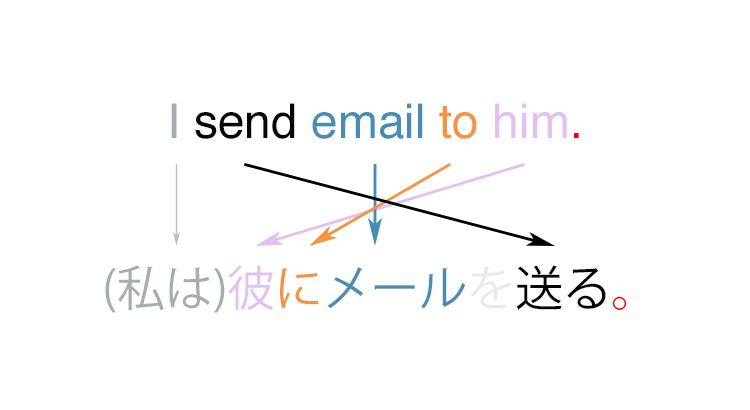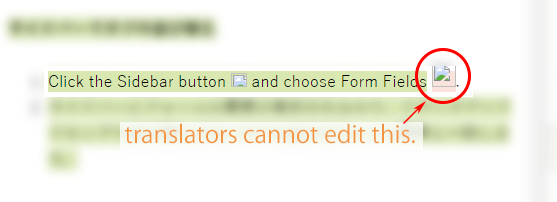Crowdsourcing services like freelancer.com has made it easy for independent and small developers to localize their software and mobile applications. All you need to do is post a project on freelancer.com and you will receive proposals from lots of freelancers who claim that they are native Japanese speakers and have translation experience. However, you will soon realize that not many of them are actual freelancers. They are translation agencies in India, Bangladesh, Pakistan, or China, and very few of them have experienced Japanese translators.
More than once, a project I was awarded was an obvious machine translation into Japanese or even in Chinese. Apparently, some freelancers on freelancer.com translate source text using Google Translate and sell it as “experienced native Japanese translation service”.
So is the key to find good translator is to find a native speaker? Unfortunately, it’s not. Being a native speaker is not at all good enough for UI projects. When translators send their translation to you, their job is done and they get paid. You must be wondering why translation delivered by native translators can go wrong. Well….it go very wrong for many reasons. Here is what can go wrong and how to prevent it.
1. Send whole sentences instead of snippets

In different languages, the positions of words are different. On the image above, “him” is last word in English and first word in Japanese. Some employers don’t consider this to be different, and ask me to translate “I send email to”. I can easily guess that after preposition “to” is a variable that will be replaced to name or pronoun. But that’s not how it works in Japanese.
There are a lot of examples of difference in positions, but the solution is to send a whole sentence with the variable and punctuation in it.

2. Punctuation is different
One of the most annoying things when using crowd translation tools is the unlocalized Quality Assurance system. The Japanese language does not have spaces or English punctuation like the period. However, many QA systems send me useless notifications like I left out a period, but 。 is the Japanese period.

This is a good example. It’s a screenshot from Crowdin, a cloud CAT tool. You can translate texts highlighted in green. Translators have no control over non-highlighted text. Look closely: at the end of the string, after the second thumbnail icon, there is a non-highlighted period. I cannot translate this into Japanese properly by replacing the English period with 。. Good translators who care about quality will let you know, but I suspect not many will, because they don’t get paid for it.
3. Some languages don’t have plurals, others have many
Some languages don’t have a plural form, whereas other languages have more than 2 forms for plurals.
The Japanese language does not have a plural form. Baltic languages, on the other hand, have singular, dual, and plural. Czech is even more complicated; one wolf is “vlk”, which is nominative singular, plural is “vlci”, so two or three wolves are “vlci”, but five wolves are “vlků”.
The Japanese language may not have plurals, but we have counter words. For example, express “two dogs”, we say “2匹の犬”. 犬 is both singular and plural of dog. We don’t add “s” at the end or change anything. “の” is something like “of” in English. “匹” is counter word for small animals. “2匹の犬” is literally “two small animal of dogs”
Counter words are similar in function to “pieces”, but there are many more variations than “cup” or “bottle” or “glasses”. There are more than 100 counter words in Japanese.
4. Name, address, and date format can be very different
My name is Masaharu Hayataki. Masaharu is my given name and Hayataki is my family name. In Japanese, I write my family name first and my given name last. Nobody calls me “Mr. Hayataki” in Japan. They call me “Hayataki san” or “Hayataki sama”. San is Japanese honorific suffix that is used for both men and women. Sama is more polite, but serves the same purpose as san. Given names are not usually used when talking to people unless you have a relatively close relationship with them.
The date format is very different, too. In Japanese, we write the year first, then the month, then the day. We don’t have names for the months like “January” either. We just call them “1月” which means first month.
Address format is particularly different. The Japanese addressing system is based on areas, subdivided from big to small. We also don’t have street names. The largest division is “Ken (prefectures)”. The Ken are divided into “Shi (cities)”. The Shi are divided into numbered divisions of “Cho (towns)”. Then you write the name and number of your building and the number of your room.
I wasn’t going to go into detail, but it is actually much more complicated than that. A prefecture can be To (都/municipality), Dō (道/modern administrative region), Fu (府/metropolitan prefecture), and Ken (県/prefecture). Cities can be Shi (市/cities), Machi (町/town), or Cho (町/town). There are also Gun (群/districts), Ku (区/wards), and Mura (村/villages).
This is the exact opposite of English, where we start writing from the smallest division. When contact forms for address starts from “street”, it is very strange to us because we don’t have name for streets and even if we did, the “street” field would be placed at bottom because it is smallest division.
5. Adjust design if possible
Localization of User Interfaces sometime require modifications in design. For example…
- Arabic is written from right to left.
- Chinese names have two to three characters like 毛泽东, whereas Icelandic names can have 20 characters or more like Björk Guðmundsdóttir. Using the same width for form elements would be awkward.
- Chinese and Japanese characters have usually more complicated designs like “魑魅魍魎” and “早瀧正治 (my name)”. If you guessed that these look terrible in an 8px height text box, you’d be right!
6. Share terminology list
A word in one language can be translated into many different words in another. Type any one word into Google Translate and you will find many words in the target language.
To maintain consistency and accuracy of translation, translators should receive from the client a list of keywords and explanations of technical jargon, acronyms, and product-specific terms.
Be careful of translators who just want to get job done and get paid
Today, we examined the most common problems encountered when conducting UI translation, and how to mitigate those problems. We also looked at some common misconceptions of hiring any old native Japanese speaker versus hiring a highly-skilled and experienced one. Unfortunately, there are people in the world who will sell you a bill of goods, costing your company lots of time, money, and possibly even generating bad publicity. Even if your source language files have problems, not many translators will tell you that. They feel like they don’t get paid for pointing out those problems and they would need to work more non-billable hours by pointing them out. Many translators know that very few employers have the ability to check the quality of translation. By investing your company’s money smartly in proper localization services, you can avoid costly mistakes later.
*Edited by Amy Erickson

Excellent. Very informative article.
Good article minus too many spelling and grammar errors!
Unfortunately it looks like agencies supposedly specialized in localisation don’t know most of what you are describing. Too many times indeed dealing with lists of words, no context and no indication of length limits. And this for a much easier European language.
Very interesting and all too true!
I really hate it when clients just want text translated, but if you try pointing them out why you expect to be paid accordingly, they start disliking you and you instantly decrease your chances of being hired by them later on. Chinese agencies also tend to underpay you – I had a case of being paid lower fee than agreed, and it took them almost 50 days longer than agreed to transfer the money. Unfortunately, that is the market we create ourselves by accepting the insane conditions in order to make a living, but in the end, pot-boiling gets back at us.
English also has several counter words disguised as suffixes, it becomes apparent when we start comparing such languages as Japanese and English. The Japanese language seems to have a spacial counter word for cylindrical objects, thus combining cigars and pipelines into one group. To illustrate my point, English suffix ‘load” in words like busload, shipload, carload, etc functionally resembles the Japanese counter words. Another example is ‘ful’.in roomful, A Hatful of Rain.
Sayonara.
>English also has several counter words.
True, but counter words are not always used in English. We use always use counter words in Japanese.
[…] example, Microsoft Word thinks there are 5 words in “<a href=” http://mhdigital.llc/ui-translation/”>Link</a>” when only one word needs to be […]
Great article love to read these information, thanks for sharing with us!!!
[…] example, Microsoft Word thinks there are 5 words in “<a href=” http://mhdigital.llc/ui-translation/”>Link</a>” when only one word needs to be […]